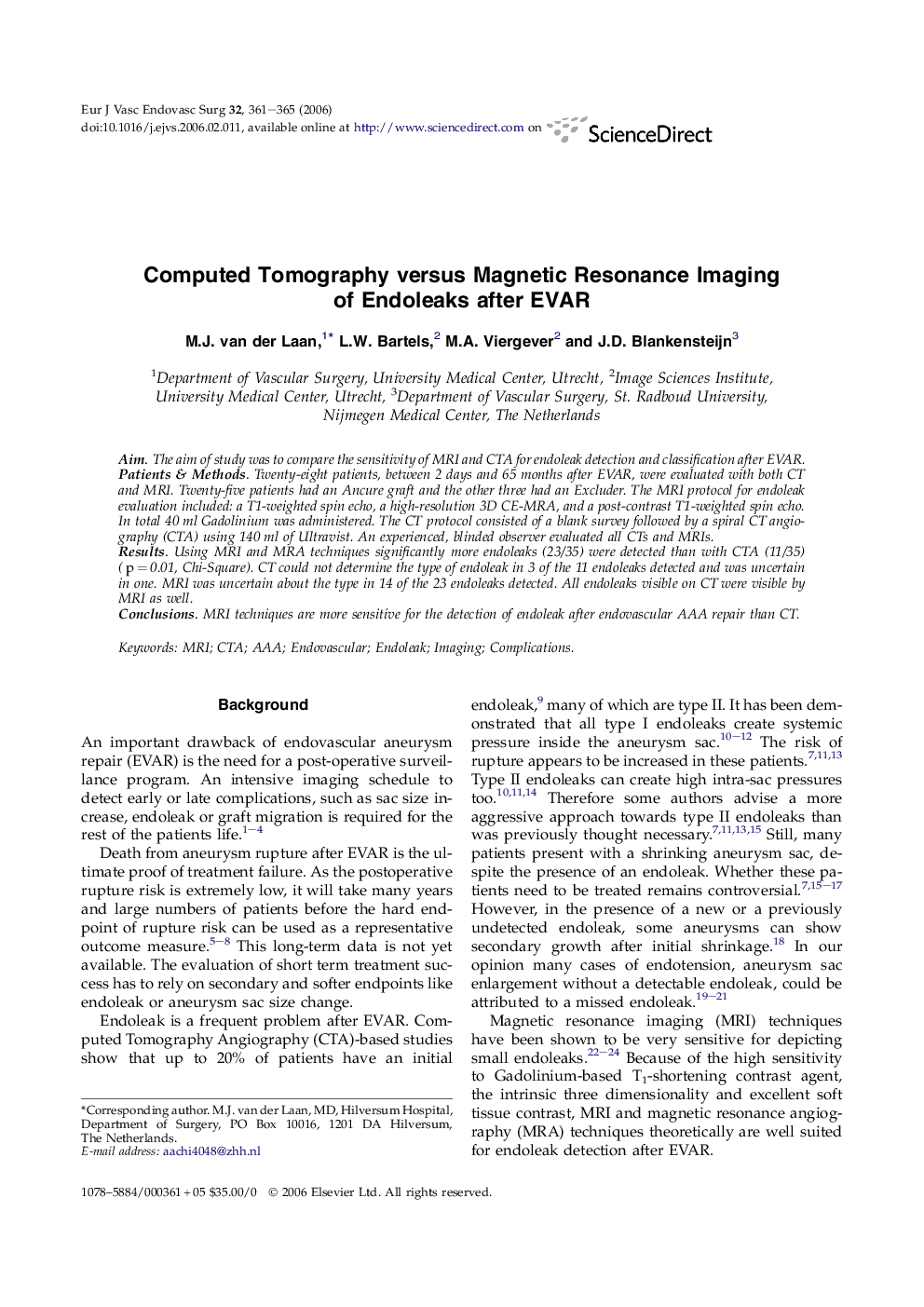| Article ID | Journal | Published Year | Pages | File Type |
|---|---|---|---|---|
| 2914900 | European Journal of Vascular and Endovascular Surgery | 2006 | 5 Pages |
AimThe aim of study was to compare the sensitivity of MRI and CTA for endoleak detection and classification after EVAR.Patients & MethodsTwenty-eight patients, between 2 days and 65 months after EVAR, were evaluated with both CT and MRI. Twenty-five patients had an Ancure graft and the other three had an Excluder. The MRI protocol for endoleak evaluation included: a T1-weighted spin echo, a high-resolution 3D CE-MRA, and a post-contrast T1-weighted spin echo. In total 40 ml Gadolinium was administered. The CT protocol consisted of a blank survey followed by a spiral CT angiography (CTA) using 140 ml of Ultravist. An experienced, blinded observer evaluated all CTs and MRIs.ResultsUsing MRI and MRA techniques significantly more endoleaks (23/35) were detected than with CTA (11/35) (p = 0.01, Chi-Square). CT could not determine the type of endoleak in 3 of the 11 endoleaks detected and was uncertain in one. MRI was uncertain about the type in 14 of the 23 endoleaks detected. All endoleaks visible on CT were visible by MRI as well.ConclusionsMRI techniques are more sensitive for the detection of endoleak after endovascular AAA repair than CT.
